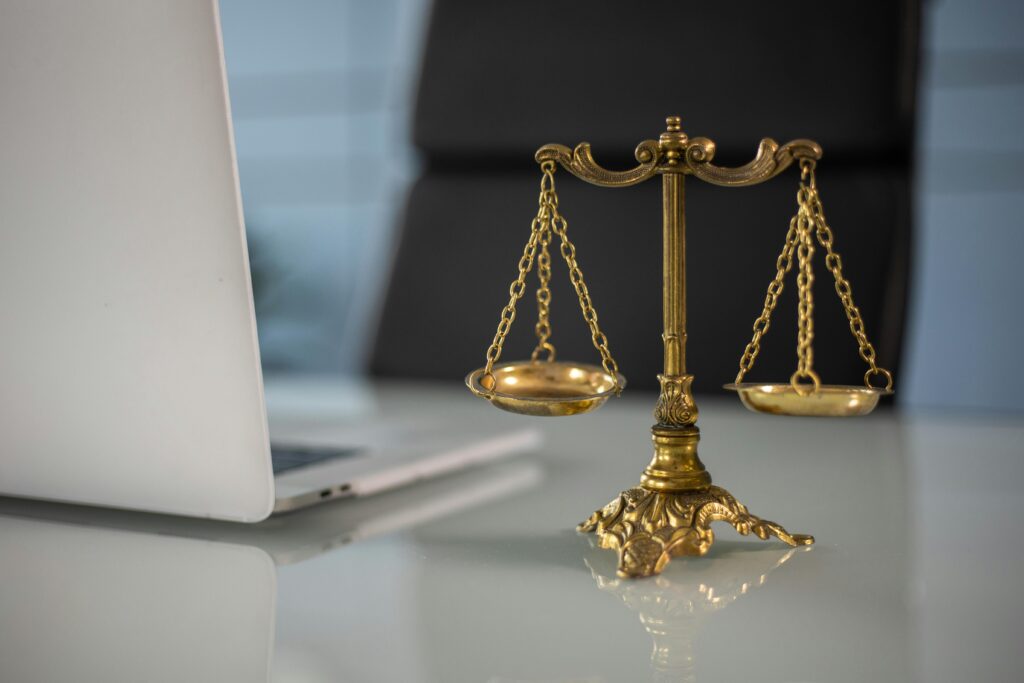Published on 29th July 2025
Authored By: Sneha Verma
New Law College, Bharati Vidyapeeth University, Pune
Abstract
This article looks at how India carefully balances the right to free speech with the need to control hate speech under its Constitution. While the Constitution guarantees freedom of expression as a fundamental right, this freedom is subject to reasonable restrictions aimed at protecting public order, morality, and national security.
Without a clear legal definition of hate speech, enforcement has been inconsistent and uncertain—especially with the fast changes happening in the digital world. This article analyses the constitutional provisions, relevant penal laws, and judicial interpretations that shape the boundaries of permissible speech, emphasizing the importance of context and intent in evaluating potentially harmful expression.
A comparative review of international legal approaches underscores the diversity of methods employed to regulate hate speech. The article advocates for clearer legislation, judicial sensitivity to social context, and increased transparency and accountability from online platforms. These measures are necessary to uphold democratic dialogue while preventing speech that fosters hatred or violence.
Ultimately, the article concludes that preserving both liberty and social harmony requires a nuanced approach that protects meaningful expression without allowing speech that undermines dignity or public peace.
Introduction: Between Liberty and Harm
In any democracy, words are powerful. They serve as tools for expressing disagreement, sparking debate, encouraging dialogue—and sometimes, causing division. Free speech means we can raise our voices when something feels wrong, share our beliefs openly, and try to inspire others to see things differently. But what happens when those very words start to injure, to incite, or to segregate? Striking a balance between individual freedom and the public good is harder than ever in today’s digital world. With harmful content spreading instantly online, it’s becoming increasingly difficult to tell the difference between honest criticism and harmful hate speech.
This article focuses on how India’s laws and Constitution address this issue. It aims to clarify the boundaries of lawful expression, the scope of hate speech laws, and the role of the judiciary in safeguarding both liberty and public order.
Free Speech: Constitutional Core and Democratic Function
Free speech isn’t just a constitutional right—it’s how a democracy breathes. Article 19(1)(a) is a fundamental right. The Supreme Court has upheld this freedom as vital to democracy, protecting the right to voice opinions, protest, publish, and share information openly. However, this right is not absolute.
Reasonable Restrictions under Article 19(2)
The Indian Constitution allows the government to impose reasonable restrictions. These include:
- India’s Sovereignty and Integrity
- State Security
- Foreign Relations
- Public Order
- Decency and Morality
- Contempt of Court
- Defamation
- Incitement to an Offence
These restrictions aim to balance personal freedoms with society’s overall well-being. The real difficulty is deciding when free speech crosses the line and turns into something harmful or dangerous, rather than just an expression of opinion. In Romesh Thappar v. State of Madras AIR 1950 SC 124, the Supreme Court firmly established that freedom of speech and the press is essential to a functioning democracy. The Court made it clear that any limits on free speech must be based only on the specific reasons listed in Article 19(2). It rejected vague or overly broad restrictions that could be misused to suppress dissenting voices. Later, in Bennett Coleman & Co v Union of India AIR 1973 SC 106 the Court expanded on this by affirming that press freedom covers both the content of what is published and its circulation. It held that restricting how many copies of a newspaper can be distributed violates Article 19(1)(a).
Understanding Hate Speech: Legal Uncertainty and Social Harm
India doesn’t have a clear, official definition of hate speech, which makes it difficult to apply and enforce related laws in a consistent and fair manner. While there isn’t a single legal description everyone agrees on, hate speech generally refers to words or actions that stir up hatred, discrimination, or violence against people based on their religion, caste, race, ethnicity, or gender. Back in 2017, the Law Commission of India tried to put forward a clear definition, describing hate speech as something that mainly incites hatred against groups defined by factors like race, gender, sexual orientation, or religion.
To put it simply, hate speech is language that spreads hostility toward certain groups. According to Black’s Law Dictionary, it’s speech that doesn’t really say anything except hate for a group, especially when it’s likely to provoke violence. So, why do we need to stop hate speech?
- It attacks human dignity
- It can lead to violence
- It tears society apart
- It misuses freedom
- It damages democracy
Understanding these dangers is crucial to finding the right balance between protecting free speech and preventing harm.
The legal framework addressing hate speech
Indian Penal Code (IPC)
- Section 153A IPC: Punishes actions or words that create hatred or tension between different groups based on religion, race, birthplace, language, etc.
- Section 295A IPC: Punishes intentional words or actions that hurt religious feelings.
- Section 505 IPC: It deals with rumors that could cause panic, unrest, or hatred in society.
Legal Challenges and Controversies
Tackling hate speech in India isn’t easy. The laws aren’t always clear, and with social media and digital platforms expanding rapidly, harmful messages can spread almost instantly—making it much harder to spot and deal with them in time.
Several key laws and debates illustrate this struggle.
- Information Technology Act,2000: Before it was struck down, Section 66A of the IT Act allowed authorities to arrest people for sending “offensive” messages online. The law was widely criticized for its vague and overly broad wording, which led to misuse and arbitrary arrests. In the landmark case Shreya Singhal v. Union of India AIR 2015 SC 1523, the Supreme Court struck down the provision, marking a major step toward protecting free speech in the digital space.
- Hate Speech on Digital Platforms: With the explosion of social media use in India, hate speech has found a new and fertile ground. The internet’s speed, reach, and anonymity allow harmful messages to circulate widely, often without accountability. From targeted abuse to communal misinformation, online hate can translate into real-world harm.
Tech giants like Facebook (now Meta) and X (formerly Twitter) have introduced community guidelines and AI-based moderation tools. However, the results are mixed. Critics point to opaque decision-making, inconsistent enforcement, and a lack of transparency in takedown policies. These platforms often struggle to find the right balance between allowing free expression and preventing hate-fuelled content from spreading.
Judicial Interpretation: Striking the Balance
The Indian judiciary has played a pivotal role in interpreting the contours of free speech and its limitations.
- In Pravasi Bhalai Sangathan v Union of India [(2014) 11 SCC 477]: The Court acknowledged the growing menace of hate speech but refrained from framing guidelines, citing legislative primacy. It urged effective implementation of existing laws and underscored the role of education and societal counter-speech.
- In Amish Devgan v Union of India [(2021) 1 SCC 1]: In this case, the Court held that hate speech is not protected by Article 19(1)(a). The judgment introduced a contextual approach, evaluating factors such as the speaker’s intent, status, audience, and the broader social climate. The Court also highlighted that certain expressions may cause disproportionate harm to vulnerable communities, warranting restriction.
- In Subramanian Swamy v Union of India [(2016) 7 SCC 221]: While not directly about hate speech, this case on criminal defamation reiterated that the right to free speech is not absolute. The Court upheld penal provisions for defamation, illustrating that harm to reputation and dignity may justify speech limitations.
Comparative Reflections: How Other Democracies Draw the Line
India is not alone in this balancing act. Looking westward and eastward gives perspective.
- United States: The U.S. First Amendment offers perhaps the most uncompromising protection of speech. Even hate speech is protected unless it crosses the line into “incitement to imminent lawless action” (Brandenburg v Ohio, 1969). This approach reflects a deep-seated suspicion of state censorship but often fails to address the real-world harms of racist or misogynist speech.
- United Kingdom and Germany: Both countries impose stricter controls. In the UK, inciting racial or religious hatred is a criminal offense under the Public Order Act 1986. This law makes it illegal to use threatening, abusive, or insulting words or behaviour intended to stir up hatred against people based on their race or religion. Germany, shaped by its Nazi past, outlaws Holocaust denial and symbols of fascism under Section 130 of its Penal Code.
India finds itself somewhere in between—legally open to reasonable restriction, but politically and socially divided over what that means in practice.
A Path Forward
So where do we go from here? Legal reform alone isn’t the answer, but it is part of the solution.
- Clearer Legislative Definitions: India’s current legal framework lacks a precise, statutory definition of hate speech. The lack of clear definitions and boundaries in laws like Sections of the IPC often leads to inconsistent enforcement. This ambiguity can result in selective prosecution, where the law is applied unevenly, sometimes influenced by political or social biases. A well-drafted definition, rooted in constitutional jurisprudence and aligned with Article 19(2), is essential which focuses on:
- Focus on speech that incites violence or discrimination against protected groups.
- Reflect international standards, such as those outlined in the Rabat Plan of Action (UN, 2012), which advocates a six-part threshold test (context, speaker, content, intent, extent, and likelihood) for identifying hate speech.
- Such a law would promote both legal certainty and judicial restraint, reducing the risk of overreach and protecting legitimate free expression.
- Judicial Sensitivity and Contextual Evaluation: Indian courts have long recognized the importance of evaluating speech within its social and political context, as reflected in judgments like S. Rangarajan v Jagjivan Ram (1989). However, lower courts often treat provocative or unpopular speech as criminal without fully examining intent or impact. Moving forward: Judicial reasoning should clearly distinguish offensive speech from speech that incites violence, using factual analysis rather than moral intuition. Training and sensitisation of magistrates and trial courts are essential for consistent, constitutionally grounded decisions.
- Platform Accountability with Safeguards: Tech platforms—especially social media giants—serve as modern public squares but currently operate without uniform accountability. India’s Information Technology (Intermediary Guidelines and Digital Media Ethics Code) Rules, 2021 require platforms to remove flagged content swiftly. However, these rules lack transparency and due process safeguards.
A balanced approach would require:
Independent oversight mechanisms, such as appellate tribunals or digital ombudsmen.
Transparent content moderation policies, with clear reasons for takedowns and accessible appeals processes.
A legal mandate to report takedown metrics publicly, ensuring accountability without enabling arbitrary censorship.
Conclusion
In a constitutional democracy, the challenge is not merely to protect speech—but to protect the right kind of speech: that which fosters dialogue, dissent, and democratic growth. Free speech is not a license to incite hate, nor should hate speech laws become tools to suppress legitimate expression. The role of law is to carefully navigate this balance—shielding voices that build understanding while restraining those that threaten peace and dignity.
India’s constitutional vision does not ask us to choose between liberty and order. Instead, it calls on us to harmonize them. In that delicate pursuit, every word matters—and so does every silence.



